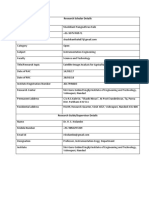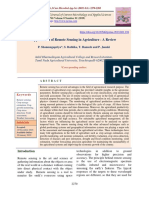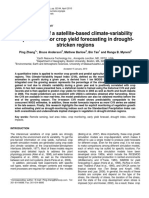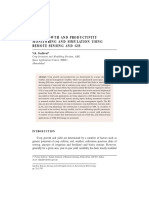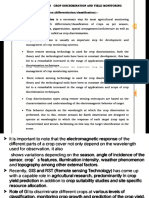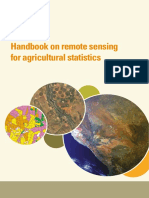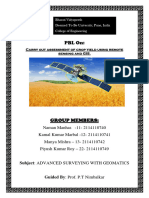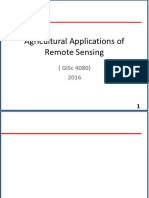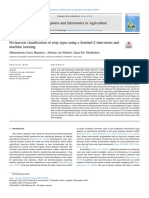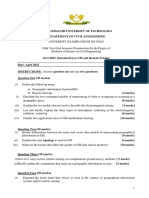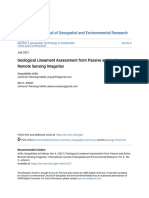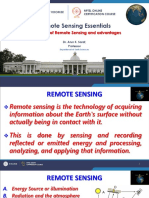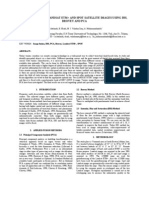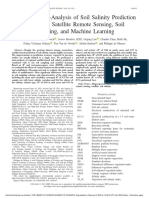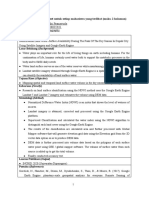0% found this document useful (0 votes)
16 views4 pagesLecture 13
The document discusses the importance of crop discrimination and yield monitoring using remote sensing for agricultural management, including crop mapping, yield prediction, and damage assessment. Remote sensing provides efficient data collection over large areas, enabling accurate mapping and monitoring of crop health and yield factors. The methodology involves ground truth collection, image classification, and integration with crop simulation models to estimate yields and assess crop conditions.
Uploaded by
meenadharshini79Copyright
© © All Rights Reserved
We take content rights seriously. If you suspect this is your content, claim it here.
Available Formats
Download as DOCX, PDF, TXT or read online on Scribd
0% found this document useful (0 votes)
16 views4 pagesLecture 13
The document discusses the importance of crop discrimination and yield monitoring using remote sensing for agricultural management, including crop mapping, yield prediction, and damage assessment. Remote sensing provides efficient data collection over large areas, enabling accurate mapping and monitoring of crop health and yield factors. The methodology involves ground truth collection, image classification, and integration with crop simulation models to estimate yields and assess crop conditions.
Uploaded by
meenadharshini79Copyright
© © All Rights Reserved
We take content rights seriously. If you suspect this is your content, claim it here.
Available Formats
Download as DOCX, PDF, TXT or read online on Scribd
/ 4









